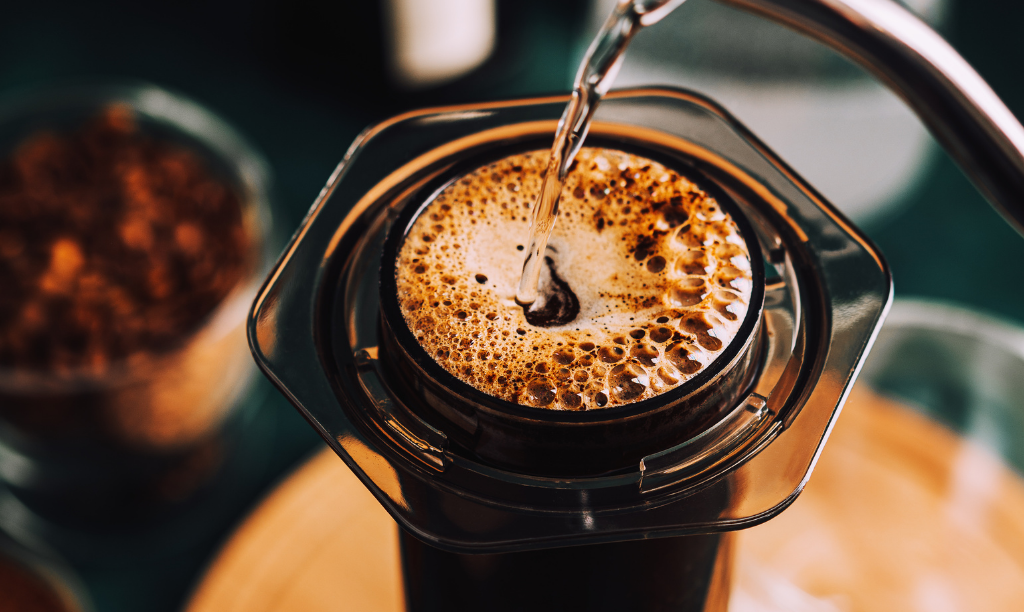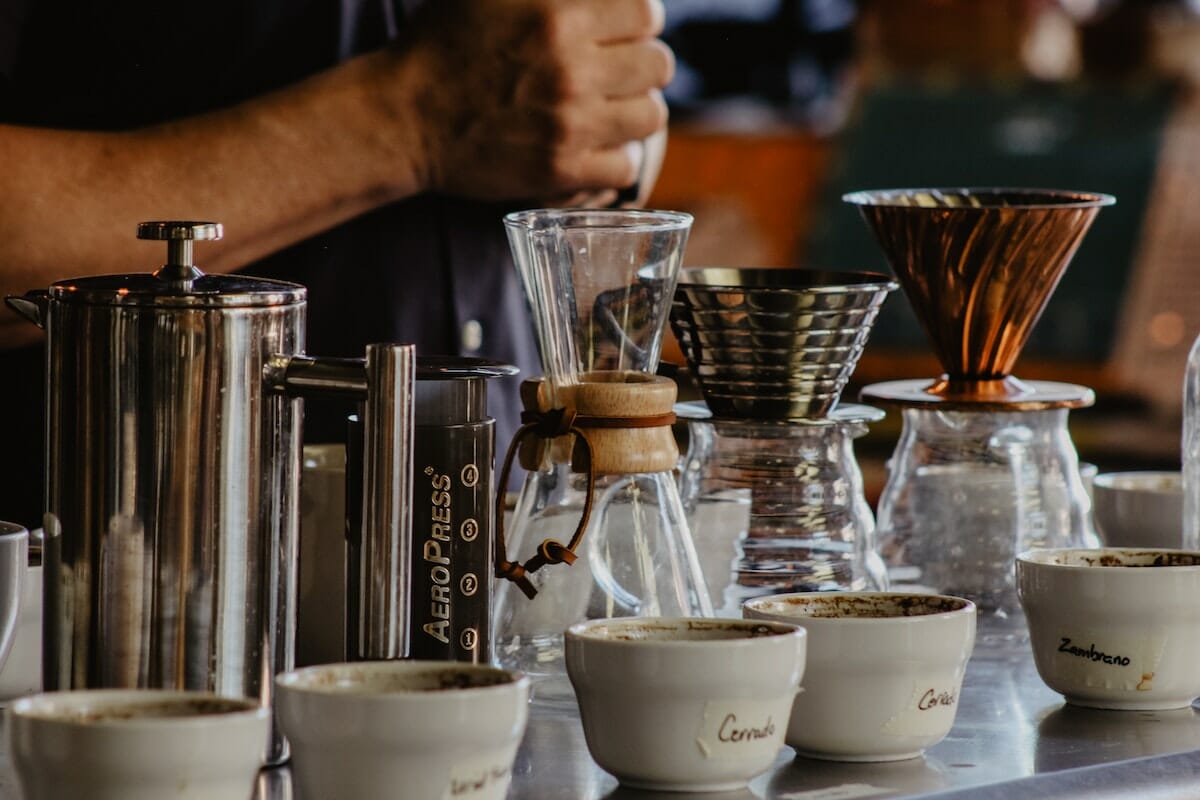A Comprehensive Guide to Various Coffee Brewing Methods You Should Attempt
Wiki Article
The Science Behind Coffee Brewing: How Temperature and Time Affect Your Drink
Recognizing the scientific research behind coffee developing reveals that temperature and time are not mere variables yet crucial components that determine the beverage's flavor account and total high quality. The ideal brewing temperature level typically drops in between 195 ° F and 205 ° F, while the duration of extraction differs dramatically throughout different methods. This interaction of aspects can lead to a cup that is either unsatisfactory or wonderful. As we check out the nuances of these components, the concern occurs: just how can one successfully balance temperature and time to attain that excellent mixture?The Chemistry of Coffee Extraction
The chemistry of coffee extraction digs right into the detailed procedures that transform raw coffee beans into the fragrant beverage taken pleasure in worldwide. This change mostly involves the solubility of different compounds present in the beans, which are affected by factors such as work dimension, water top quality, and the brewing technique employed.Throughout the brewing procedure, warm water serves as a solvent, removing soluble substances, including caffeine, acids, lipids, and sugars, from the coffee premises. Each substance adds to the taste account, aroma, and body of the final drink. Acids are responsible for bright and zesty notes, while oils add to an abundant mouthfeel.
The first stages of developing essence acids and sugars, leading to a pleasurable acidity, while prolonged extraction can lead to anger due to over-extraction of unwanted compounds. Comprehending these chemical interactions is important for optimizing developing strategies, as the equilibrium in between extraction time and water temperature can substantially influence the general high quality of the coffee.
Ideal Developing Temperatures
Discovering the right developing temperature is vital for unlocking the complete potential of coffee flavors and aromas - coffee brewing methods. Research study shows that the optimal range for brewing coffee lies in between 195 ° F to 205 ° F(90 ° C to 96 ° C) Within this array, the removal process effectively dissolves the desirable soluble compounds in coffee beans, causing a well balanced and flavorful cupBrewing at lower temperature levels, such as listed below 195 ° F(90 ° C ), might cause under-extraction, generating a weak and acidic mixture with soft tastes. Alternatively, developing at temperatures exceeding 205 ° F(96 ° C) can lead to over-extraction, creating a rough and bitter preference as a result of the extreme dissolution of undesirable substances, such as tannins.
Moreover, the suitable brewing temperature can differ relying on the coffee bean kind and roast degree. Lighter roasts commonly profit from a little greater temperatures to improve their intricate taste profiles, while darker roasts might be much better matched to reduced temperatures to minimize bitterness.
Ultimately, maintaining accuracy in brewing temperatures is important for accomplishing an unified balance of flavors, making sure that every cup of coffee supplies a satisfying sensory experience.
Effect of Brewing Time
Developing time plays a crucial duty in identifying the flavor profile and general top quality of coffee. The removal procedure, which influences the taste, aroma, and body of the beverage, is largely dependent on just how long the coffee premises touch with water. Much shorter brewing times can lead to under-extraction, bring about a sour or weak flavor, as inadequate soluble compounds are dissolved. On the other hand, prolonged developing can bring about over-extraction, where unwanted substances are launched, causing a bitter or astringent preference.Optimum brewing time differs depending on the method utilized and the work size of the coffee. A French press commonly calls for concerning four mins, while coffee removal is generally finished within 25 to 30 seconds. It is necessary to adjust brewing time in combination with various other variables, such as water temperature and coffee-to-water proportion, to achieve the wanted flavor account.
Understanding the impact of developing time enables coffee lovers to refine their brewing strategies, ultimately improving the sensory experience of their mug (coffee brewing methods). With careful interest to this variable, one can open the full capacity of the coffee, exposing its distinct qualities and nuances
Brewing Methods and Their Effects

As an example, techniques like French press and cool mixture enable a longer steeping time, leading to a fuller body and robust flavor as a result of boosted extraction of oils and soluble solids. On the other hand, coffee brewing makes use of high pressure and a shorter removal time, generating a concentrated shot that read the article emphasizes extreme flavors and an abundant crema.
Pour-over methods, such as Chemex or V60, provide an even more controlled removal procedure, allowing the brewer to manipulate circulation price and water circulation, which can boost illumination and clearness. Percolation methods cycle water through the coffee grounds multiple times, leading to a more have a peek at these guys powerful, usually bitter taste.
Last but not least, using paper filters versus metal filters can likewise affect the final taste; paper filters typically produce a cleaner mug by trapping oils and great fragments, while metal filters allow even more oils to travel through, adding to a fuller mouthfeel - coffee brewing methods. Understanding these subtleties can raise the coffee experience considerably
Tips for Perfecting Your Mixture
A well-executed brew can change even the easiest coffee right into an amazing experience. Grind the beans simply prior to making to maximize freshness, making sure the work size matches your developing method-- coarser for French press and finer for espresso.Water top quality plays a vital role; use filtered water devoid of pollutants. The suitable developing temperature level varies in between 195 ° F and 205 ° F(90 ° C to 96 ° C ) Also warm can blister the coffee, while too trendy may under-extract flavors.
Timing is equally important. For immersion approaches, steeping for three to five mins is optimum, whereas drip methods commonly take around five minutes. Explore mixture times to discover your preferred strength.

Verdict
In recap, the elaborate relationship in between temperature and time is paramount in the coffee developing process. Recognizing these scientific concepts equips individuals to refine their developing strategies, eventually leading to an extra well balanced and enjoyable coffee experience.Comprehending the science behind coffee brewing discloses that temperature and time are not plain variables however crucial aspects that determine the drink's flavor account and overall top quality. Understanding these chemical communications is important for maximizing brewing strategies, as the balance in between extraction time and water temperature level can significantly affect the total high quality of the coffee.Developing time plays a critical duty in figuring out the taste profile and overall quality of coffee. By focusing on these aspects-- bean top quality, grind size, water temperature, steeping time, and ratio-- you can raise your coffee developing process, resulting in a constantly remarkable mug.
In summary, the complex partnership between temperature and time is vital in the coffee developing process.
Report this wiki page